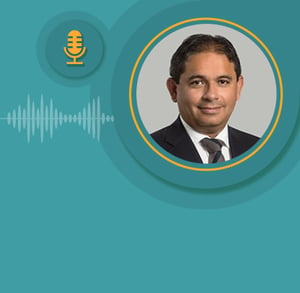One of the most common questions asked by companies and law firms alike when considering litigation funding is: “Who controls the action?” Will a third-party funder who is investing in the litigation expect to control key decisions such as settlement? Will the funder even expect to control key legal decisions during the course of the litigation?
The answer is that funders are passive investors in the litigation. The client remains in control of its own case. The client selects and instructs the law firm. The client takes decisions regarding case strategy supported by advice from its law firm, and it is the client which decides whether or not to accept, or make, a settlement offer.

However, this in itself this creates risks for funders. Funders only receive their invested capital back when there is a success in the case. Success can come in the form of payment from a defendant through a settlement or following a judgment or award. However, the chances of success, or the returns upon success, can be compromised by the client adopting an uncommercial strategy. For example, the client could refuse to accept a sensible settlement, or it could adopt an overly aggressive strategy involving numerous applications or motions when only a small proportion are meritorious. Such an approach creates significant risks for a litigation funder. An aggressive series of unmeritorious applications or motions can increase legal fees resulting in the premature exhaustion of the litigation budget or the need for additional or disproportionate amounts of funding. Similarly, the refusal to accept a reasonable settlement can lead to litigation continuing for months, or even years, longer than required. That additional time means that the litigation funder’s investment will be deployed for longer without resolution and the cost of its capital could increase. It could also impact the client’s own recovery as litigation finance returns often increase with time meaning that a settlement of $10 million today would provide a greater return to the client than a $10 million success in two years’ time (even before taking the time value of money into account).
So how do litigation funders mitigate the risk of a client adopting an uncommercial strategy?
Managing Risks in Litigation Funding
Litigation funding is one of the highest risk investment classes. The results of an investment in litigation finance are binary. Either the case is successful, and the funder receives its capital back and a return, or the case is lost and the funder loses all of its investment. Contrast this position with an investment in the stock market. Even in a downward market, investors selling shares would still recover a portion of their capital invested; litigation funding investments either win or lose.
So, how does the funder mitigate its risks? All funders carry out detailed due diligence before investing in a case and the client is a crucial part of that due diligence. There will need to be a relationship of trust between the funder and the client. If the funder does not have an open and trusting relationship with the client (and vice versa), the already high pressure on the parties to the funding agreement will only increase.

Establishing that relationship, or indeed assessing the potential for that relationship, will come down to the questioning involved in the due diligence process. The funder’s questions will not just cover the case and the legal strategy. They will also include enquiries about the client itself. At Deminor, we consider not only the content of the client’s answers to the due diligence questions but also how the client answers the questions.
What Questions Do Funders Ask?
- Why does the client want to litigate? A funder will want to understand the story so far and the client’s ultimate goal. A client seeking its “day in court” above all will usually be a red flag in the due diligence process and ultimately not lead to investment by a funder. While a client is entitled to have that goal, airing arguments is rarely a commercial rationale for bringing a case and it will not add to the client’s bottom line. We like to understand the client’s business, how the litigation fits with its business strategy, and what the ultimate goal is. The client’s objective could be a commercial one in the context of its business, but it still may not fit a funding model. For example, funding is unlikely to work if the client is seeking a declaratory remedy rather than a payment of damages. Litigation funding is a non-recourse form of finance; without a payment of damages or settlement monies from the defendant, the funder will not receive its investment back or any return. If this were to happen frequently, the funder would soon be out of business!
- What is the client’s current and recent financial position?
Is there a solvency risk whereby the funder might sit behind other creditors or has the client granted its bank a floating charge over all company assets? Although litigation funders pay legal fees and costs directly to the law firm, existing financial or security structures could pose a threat to the funder receiving its share of the damages. In such cases, an open discussion with existing charge holders and the client can lead to structures that are optimal for all parties. A win in litigation could add substantial value to the client to the benefit of all its creditors. - Has the client been involved in any activities which may harm the reputation of the funder? This can include activities unrelated to the litigation or the particular legal entity that would be the claimant such as fraud, anti-trust, or environmental abuses within the client’s wider group.
- Does the client have any litigation track record? How have previous cases been litigated? Who were the personnel involved in decision making in those cases and are they the same people who will be instructing the law firm in the case requiring funding?
- If the client has not been engaged in litigation before, how much of an understanding do the key stakeholders within the client have of the litigation process and their role in it? Although litigation finance will mitigate the client’s financial investment in the litigation, running a successful case will still require an investment of time by the client.
- Who will appear as a witness in the case? Are key witnesses still employed by the company? Have they been witnesses in previous cases? How did they find the experience? Did the company enable them to have sufficient time within their role to dedicate to the litigation? Is supporting the litigation part of the witness’ objectives for the year? Poor or hostile witnesses can inflict significant damage on a case and so checking that key witnesses are engaged and supportive of the litigation is key.
- What is the client’s relationship with the law firm it has instructed? Is there a working relationship of trust and a clear channel of communication? Is the instructing person within the client sufficiently available and do they have enough bandwidth to dedicate to the case? Where the day-to-day decisions and instructions will be provided by the CEO, for example, there will be a natural tension between time spent on the litigation and time spent in taking strategic business decisions. There is often little flexibility in court deadlines and law firms need sufficient time to complete work once the client has provided instructions. If instructions are not provided clearly or in a timely way, this can, again, negatively impact the litigation.
- Has a relationship of trust been built up between the client and the funder during the due diligence process? Can the client and funder have an open discussion around the budget or the case itself? Are they on the same page commercially?
If the answers to all of these questions are positive, the funder will advance an offer of financing to the client. If the offer is accepted and the parties enter into a litigation funding agreement, the ground work in building a relationship of trust during the due diligence process will help the parties to move forward positively and will ensure that commercial interests are aligned between the client and the funder.





